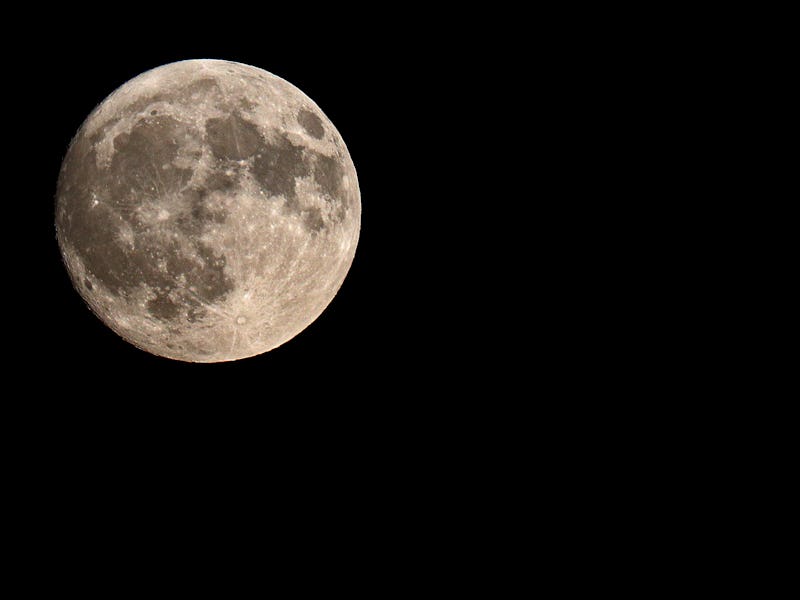Tonight's Beaver Moon Isn't a Super Moon But Will Still Be Very Bright
Stop what you're doing and look out your window.

The moon. Our beloved neighboring object, our rocky large adult satellite, our mystical tender of oceanic tides. Its gentle orbit has inspired the creation of religious deities, art as old as humanity itself, and a lot of dogs named Luna. It seems to smile as it reflects sunlight back over all of us.
Each month, tradition dictates that each full moon is given its own nickname. November’s full moon is called the Beaver Moon or Hunter’s Moon, because it is the time of year when hunters set beaver traps before water freezes and the beavers hang out in their dens all season, according to NASA. They also describe the first known usages of the nickname: A Farmer’s Almanac from the 1930s describes the full moon of November being called the Beaver Moon by Algonquin tribes in the Northern United States. The Hunter’s Moon is even older: NASA traces it back to an Oxford Dictionary from 1710.
The Beaver Moon is also going to appear larger and brighter in the sky. On Saturday night, it will be 226,179 miles away, which is just shy of the 224,587 miles it reaches at its perigee, or closest distance to Earth. The moon will be at perigee on Sunday, but the full moon ends on Saturday. In order to qualify for the super moon designation, it would need to be at perigee during a full moon. The Beaver Moon misses the super moon title by just one day.
Still, this moon should look spectacular all weekend, if skies remain clear. In the Northern Hemisphere, the moon will be higher in the sky as winter approaches. On Sunday night, the moon is still going to be nearly full, and at its perigee it will look like a diamond on the sky. Take some time out to check out our closest heavenly sibling — we only have one moon, but it’s way cooler than all the other celestial objects in the solar system. Take that, Harpalyke.
If you liked this article, check out this video of what it looks like to land on an alien moon.